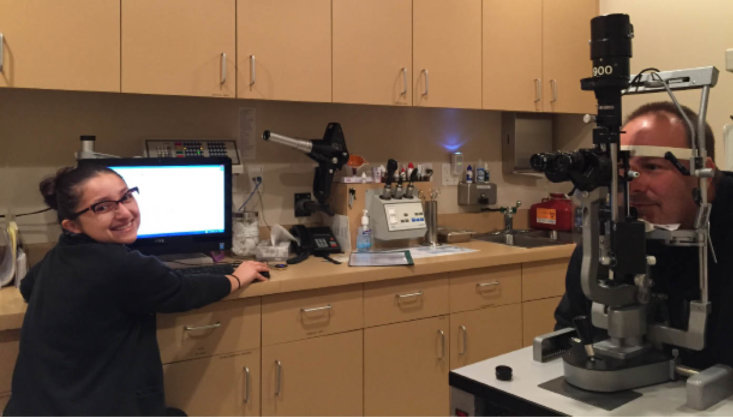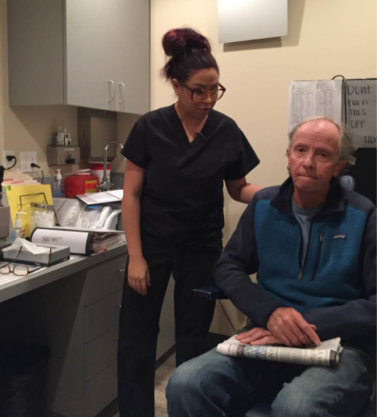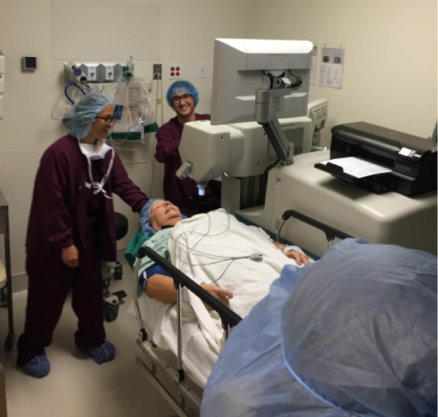Like each year before it, 2015 had some exciting advancements and challenges and required us to sharpen our skills to remain efficient. Below are three difficult scenarios my practice was faced with and explanations of how we overcame them in order to remain productive.
#1. Assigning scribes to doctors for EHR.
Many practices had already jumped over to EHR, but it wasn’t until the fall of 2014 and really 2015 that we finally committed. There were some major advantages: We gained the ability to see the same chart at our different offices and clearly read each doctor’s writing. Another benefit is that placing terminals in each exam room allows us to show VueCare Media videos for patient education. Computer-generated videos have been helpful in explaining medical conditions, from floaters to LASIK to laser cataract surgery, and have helped us reduce
chair time.
On the flip side, dealing with software updates, filling out charts for everyday exams, and handling PQRI requirements were all extremely time-consuming tasks. So, we hired and reassigned some staff members as scribes to keep us nimble. In our group, each physician now has a tech assigned as a scribe (Figure 1). This allows our practice to maintain that doctor-patient relationship, as I can speak directly to the patient instead of talking to the computer. Often, we’ll start out together, but the scribe will stay with the patient and finish entering the digital exam in the EHR and guide the patient to the front desk for the next step in his or her care. We try to keep it as seamless as possible so that no patient feels lost in our office.

Dr. Goldberg’s assigned scribe.
#2. Assigning multiple techs for testing stations.
We found it highly productive to assign techs a shift in the testing room. With the amount of tests we need to maintain our sharp results as a premiere refractive cataract center, we were taking more and more images for each patient. Now, a typical refractive cataract patient will get an Atlas topography (Carl Zeiss Meditec), Cassini anterior and posterior topography (i-Optics), IOLMaster (Carl Zeiss Meditec), TearLab osmolarity testing, plus a Zeiss OCT fast macular thickness map—not to mention additional calculations if the patient is selected for a femtosecond laser treatment or requires toric IOL or post-LASIK calculations. All of these are time consuming. We also require additional visual fields, fundus photos, and OCTs for everyday patients. We found we needed two full-time people to run our testing center and again have the techs take shifts for this position.

A cross-trained back office nurse.
Just like with the scribe role, our office found it was important to have every back-office tech rotate as a testing tech (Figure 2). The reality is that you never know who will be out for vacation or due to illness, and it became very disruptive if the one nurse who knew the EHR really well was out. So, we wanted everyone cross-trained and the ability to be as flexible as possible.
#3. Implementing the femtosecond laser and using multiple rooms in the OR.
Although I had personally explored the femtosecond laser technology and visited a neighboring surgery center, fall of 2014 is when my group really committed and brought the device to our own local surgery center. Offering the laser has been a terrific practice builder, and we have found our patients like that we offer the latest in technology.
In addition to having to learn and decide the right laser treatment pattern, incorporating the femtosecond laser into our surgical line-up did require us to address some issues related to our efficiency. The laser had always been housed in a separate temperature- and humidity-controlled room. However, initially using the laser slowed me down, and two to three laser cases a day could delay my morning by 60 to 90 minutes. Therefore, we worked out a system to not only use a separate room for the laser but to also run two ORs (Figure 3). Since then, I’ve become significantly more efficient and now finish 30 minutes earlier.

A patient being moved from the femtosecond laser procedure room to one of the two ORs Dr.Goldberg uses.
SUMMARY
I’m sure that 2016 will have its own challenges for our practice, but we
have enjoyed overcoming these few in 2015. After all, it takes practice to
make perfect.


